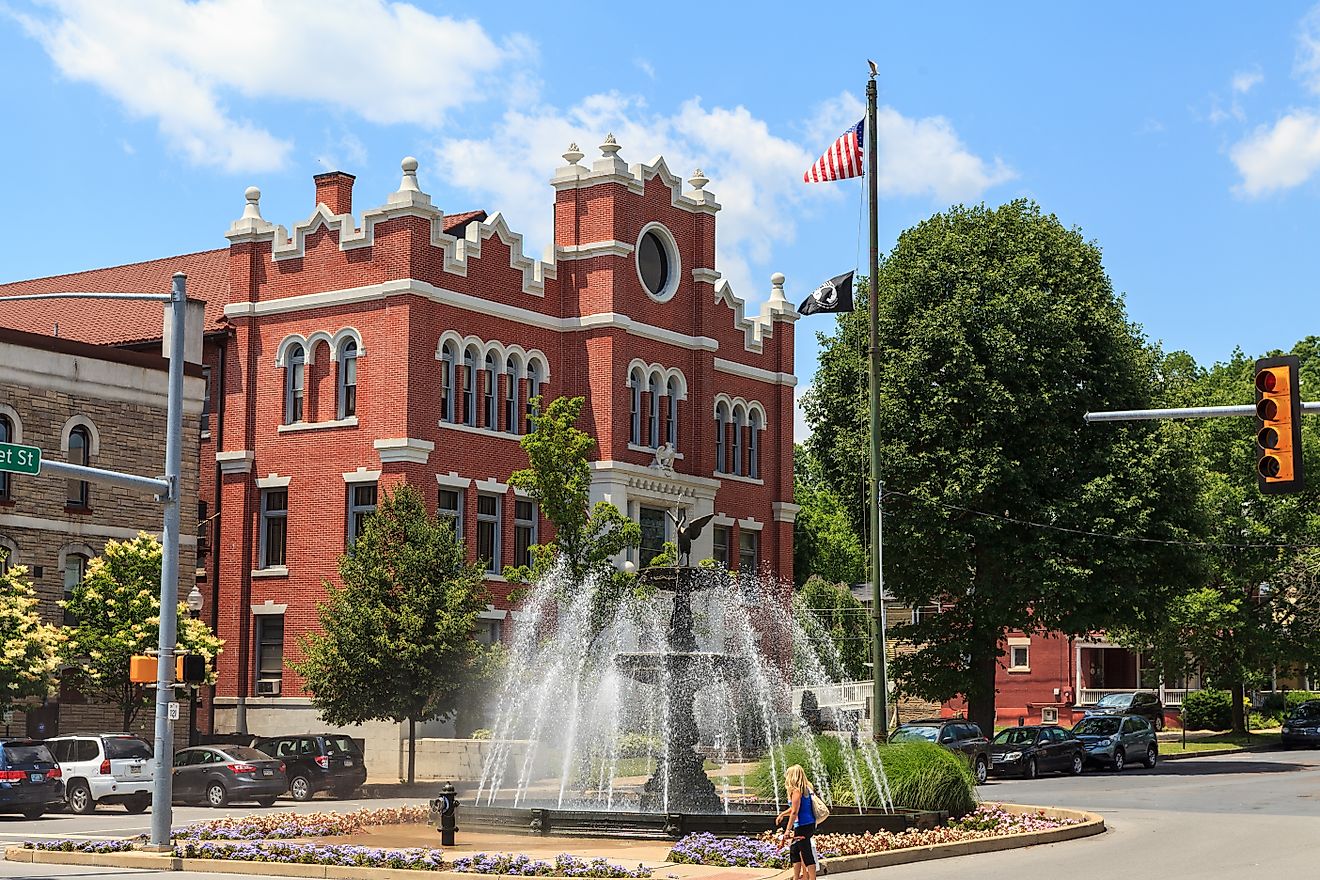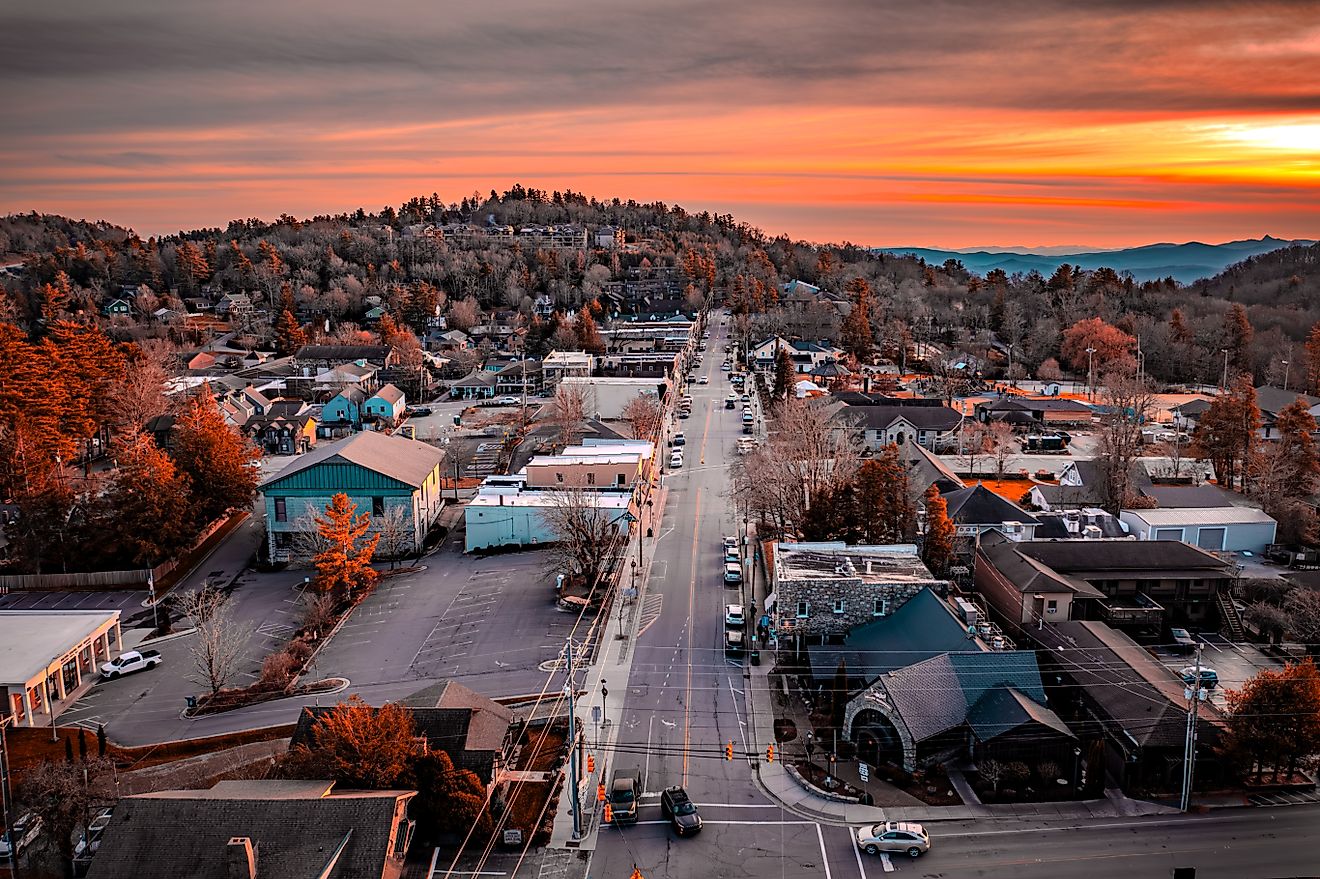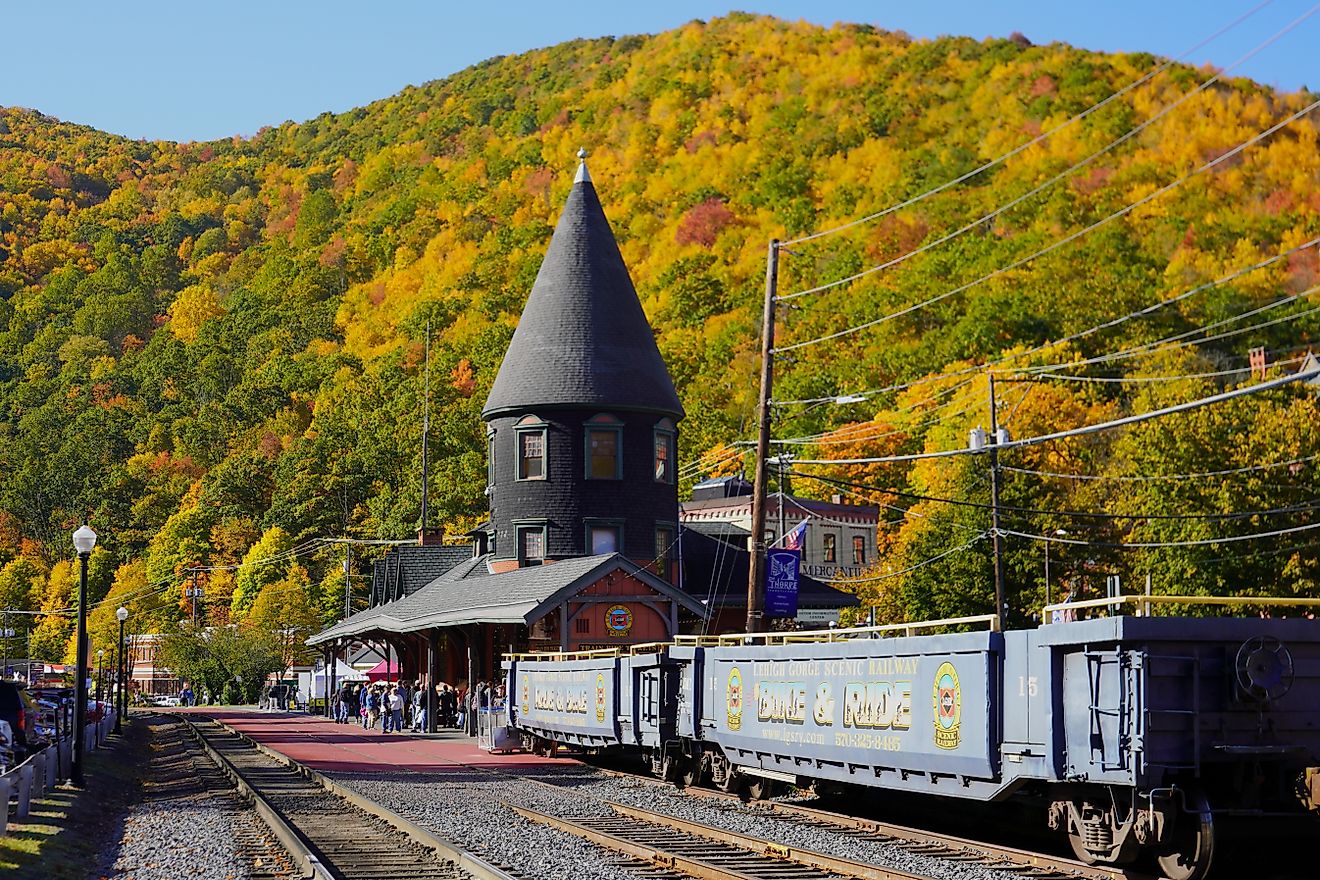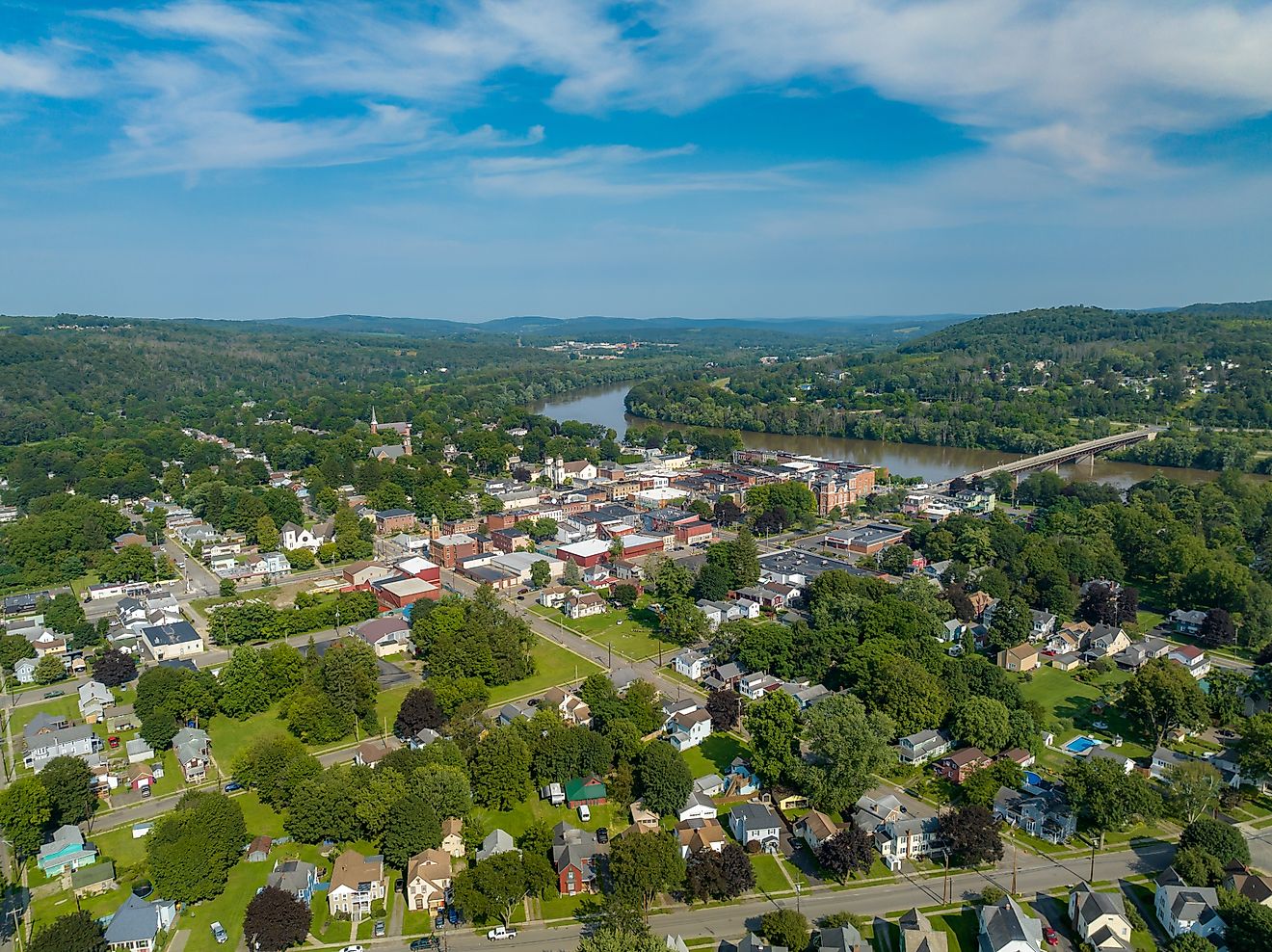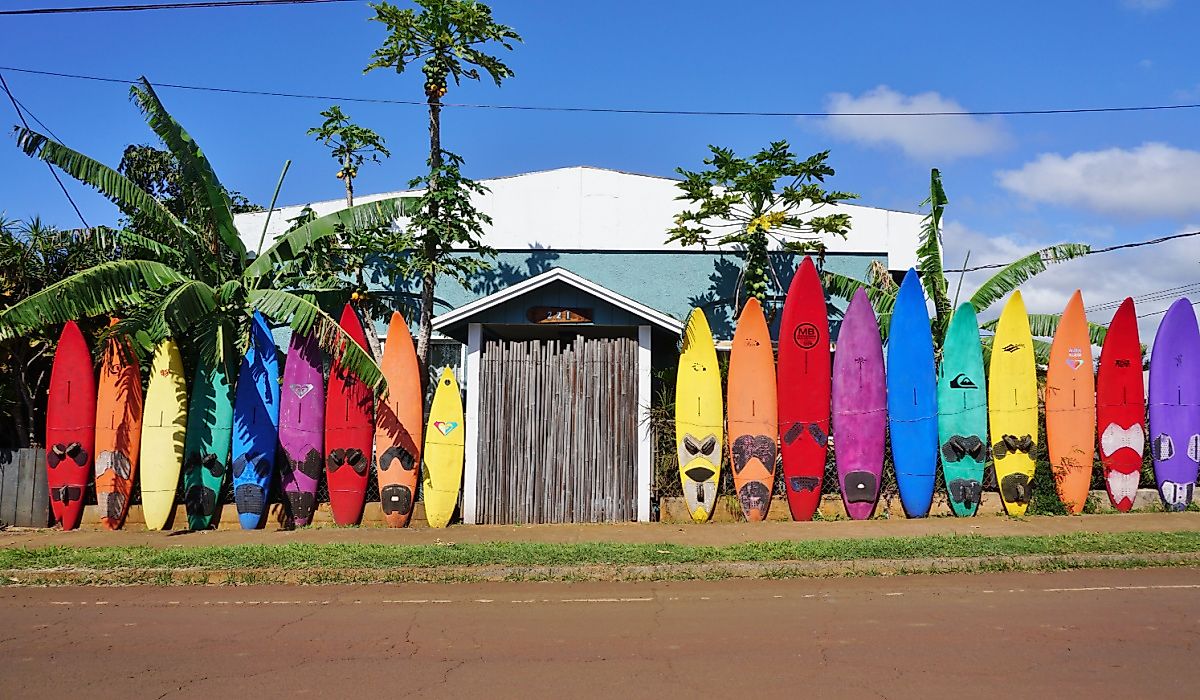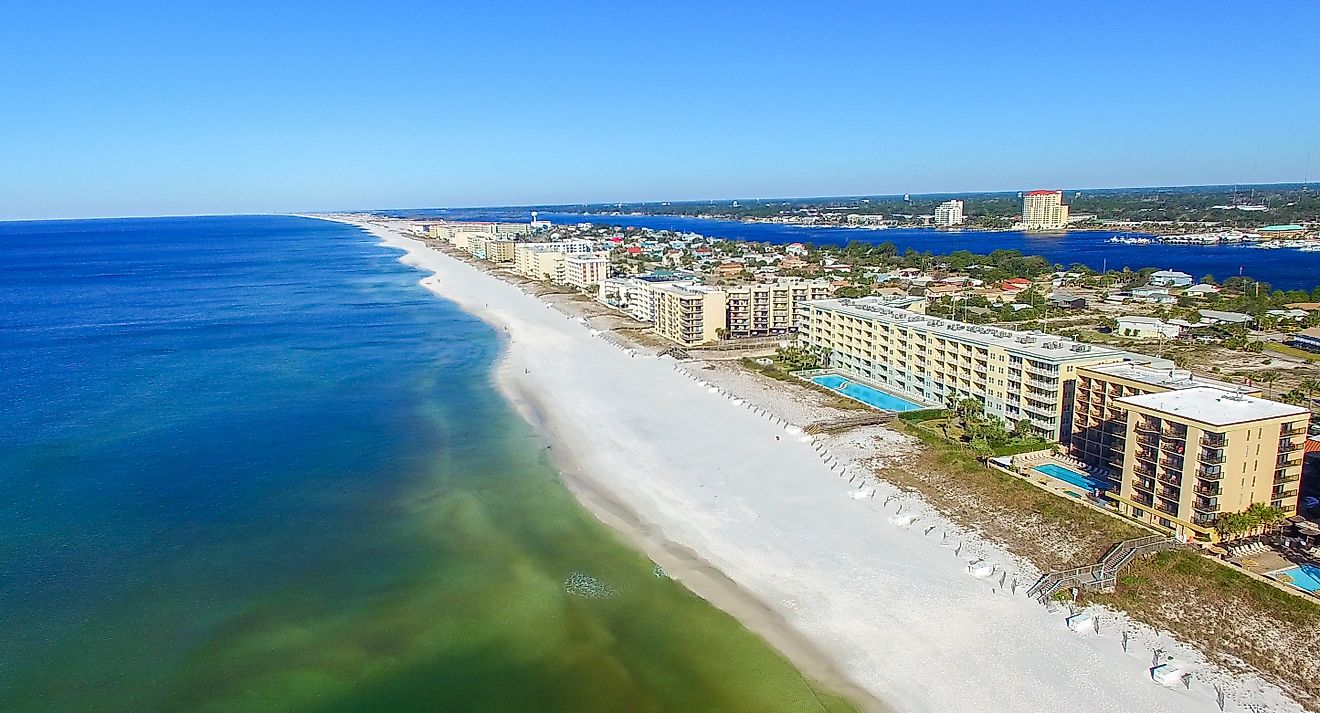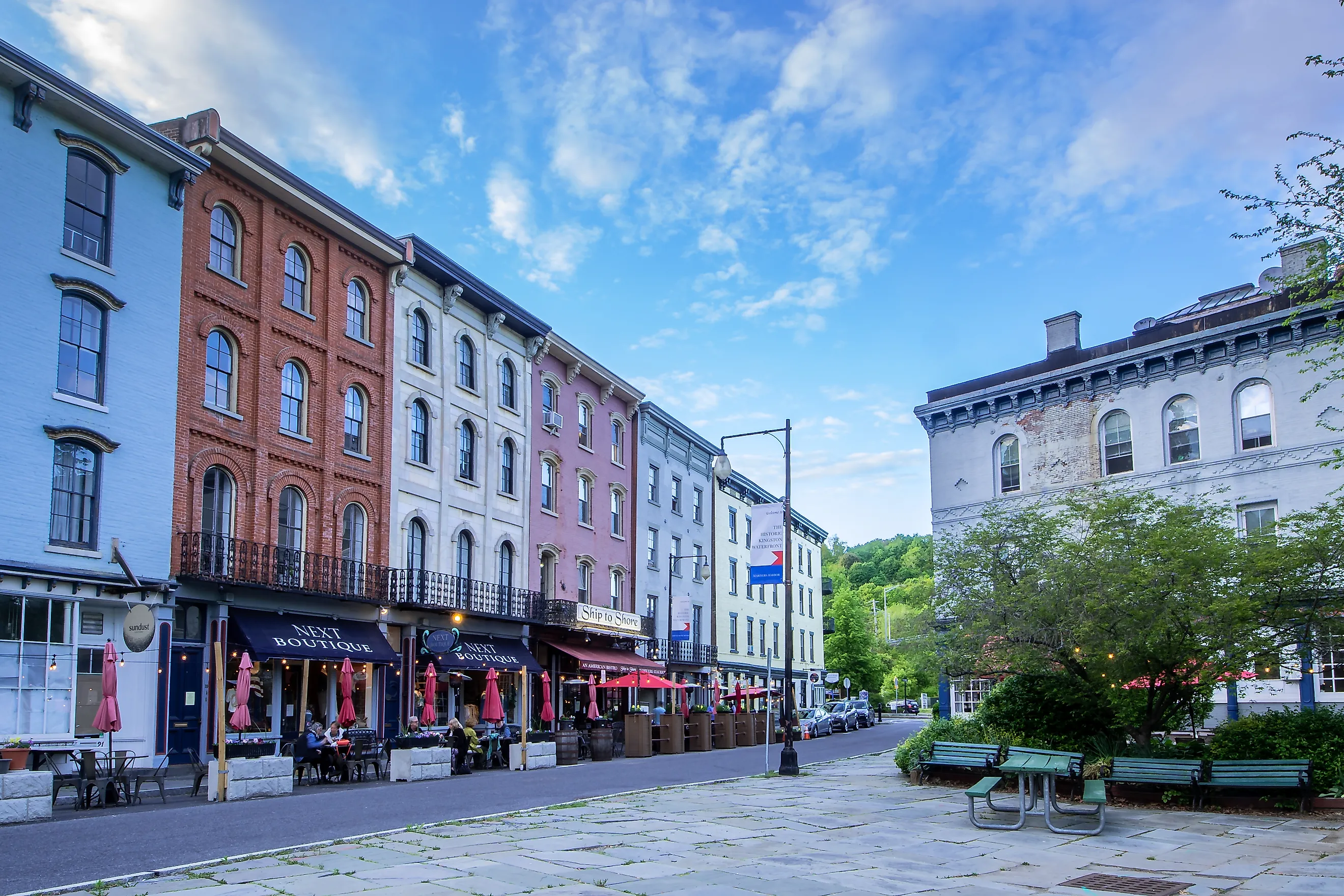
10 Standout Main Streets In Upstate New York
No skyline, strong spine. Upstate New York’s best main streets are working spines where a bookstore holds the corner, a clock tower keeps time, and a canal lift bridge can still pause the day. From river mills to resort verandas, these streets carry the region’s stubborn mix of industry, leisure, and small-town choreography, parades at noon, deliveries at dusk, porch lights after dark.
Our filter is simple and strict. Intact blocks with original bones. A public “room” on the route (square, park, depot, hall). Independents that open early and close late. And the Three-Lights Test: morning bakery lights, midday civic doors, and a marquee or tavern glow after 9. What follows is a canal-to-mountains circuit, ten main streets where daily life shares the curb with history, where the landmark isn’t a backdrop but a neighbor.
Corning
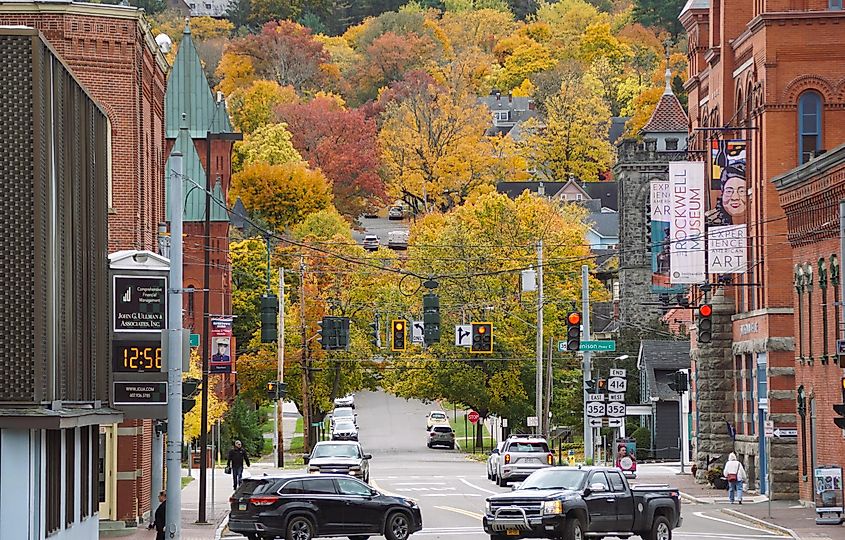
Corning’s Market Street is one of the most intact and visually striking small-town corridors in Upstate New York, anchored by Centerway Square, a bricked plaza framed by 19th-century facades, iron benches, and a cast-iron clock tower that still ticks. The square’s layout is unusual for a town this size: it functions as both a literal and cultural crossroads, with direct access to the Chemung River footbridge and views toward the hills. Corning’s identity is tied to its glassmaking history, but the square is where the town’s personality sharpens, at the intersection of industrial heritage, small-town pacing, and restored Victorian architecture.
The Corning Museum of Glass sits just a 10-minute walk from the square and holds one of the largest collections of contemporary glass art in the world. Inside the square itself, Vitrix Hot Glass Studio offers daily live-blowing demos steps from the sidewalk. Across the street, Soul Full Cup Café serves dark roast and local pastries out of a corner storefront with large windows facing the square. For dinner, The Cellar, located a block down, offers duck breast and handmade gnocchi with a Finger Lakes wine list.
Hudson
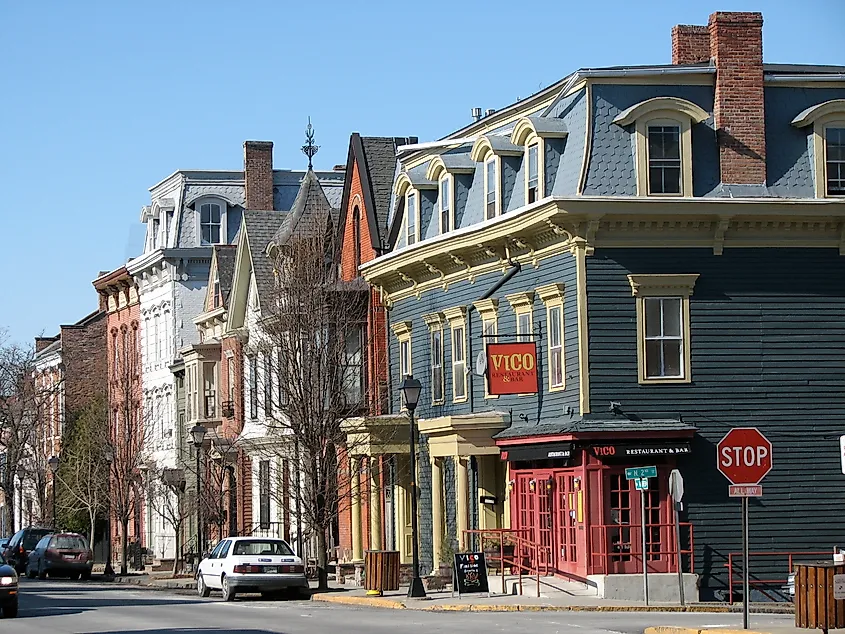
Hudson’s public square is technically a triangle, 7th Street Park, but it sits at the heart of a city designed in 1785 by retired whalers from Nantucket. The grid layout remains intact, and the park’s cast-iron fountain and mature trees mark the midpoint of Warren Street, a commercial corridor that stretches from the Amtrak station to the base of Prospect Hill. The park is framed by Second Empire facades and the old Hudson Library, and acts as a dividing line between the antique-heavy lower Warren and the residential upper blocks. Hudson was once a port for rum-runners and factories; now it's known for galleries and weekend crowds, but the square hasn't lost its municipal feel.
Directly facing the park is Hudson Hall, the oldest surviving theater in New York State, which stages chamber operas, civic panels, and modern dance. Around the corner, the café at Feast & Floret serves coffee and cut flowers in a shared space, often with its doors open to the park. Hudson Diner, two blocks west, serves classic plates from the restored diner car at 609 Warren Street. John Doe Books & Records, one of the oldest shops on Warren, is a five-minute walk from the square.
Medina
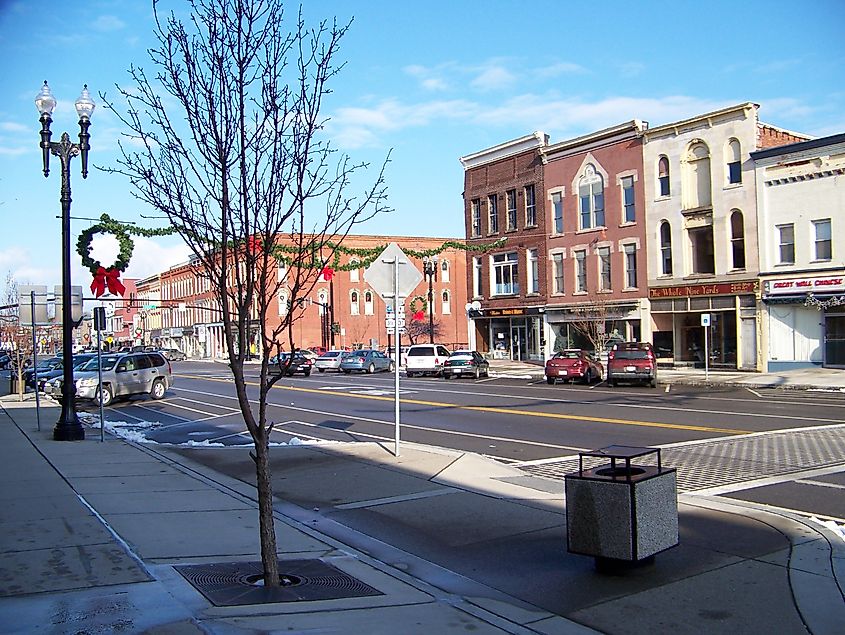
Medina’s town square sits two blocks from the Erie Canal and is built almost entirely of locally quarried Medina sandstone, a material once used in the base of the Brooklyn Bridge and the steps of the U.S. Capitol. The square is informal, a widened bend of Main Street at the intersection with East Center, anchored by a clock tower and surrounded by intact late 1800s commercial blocks. Bent’s Opera House, opened in 1865 and recently restored, dominates the eastern edge with its original tower and second-story balconies. From the square, the canal is visible through side streets, and the rhythmic sound of the lift bridge can be heard when it rises for boats.
Zambistro, located at 408 Main, serves crab cakes and ribeye in a narrow dining room overlooking the square. Just up the block, Shirt Factory Café operates inside a former industrial building and offers counter-service espresso alongside rotating local artwork. The Medina Railroad Museum, a five-minute walk, houses one of the largest toy train layouts in the country inside a 1905 wooden freight depot. On Friday evenings in summer, Canal Village Farmers' Market sets up along the square’s edge with live music, regional produce, and prepared food vendors facing the sandstone storefronts.
Kingston

Kingston’s town square lies in the Stockade District, where Wall and North Front Streets meet at the only intersection in the U.S. with 18th-century stone buildings on all four corners. Known as the Four Corners, this square marks the center of the original Dutch settlement, which became New York’s first capital in 1777. The Senate House, one block west, is where the state's first constitution was ratified. The layout hasn't changed since 1658, when a wooden stockade enclosed the village. Cobblestones, uneven sightlines, and narrow crosswalks mark the square’s edges.
Rough Draft Bar & Books occupies a corner brick building and serves local beer with shelves of nonfiction, poetry, and new releases. The weekly farmers' market sets up directly in front of the square and stretches along Wall Street with over 30 vendors. A short walk away, Restaurant Kinsley, at 301 Wall Street, serves seasonal dishes and cocktails inside a restored former bank. The Fred J. Johnston Museum, one block off the square, houses 18th-century American furniture inside a Federal-style home with intact interior woodwork. The square remains Kingston’s axis, used daily by delivery trucks, food vendors, and pedestrians moving between the city’s three distinct neighborhoods.
Saratoga Springs

Saratoga Springs is built around mineral springs, horse racing, and a downtown that hasn't broken stride since the mid-19th century. Its town square isn’t a traditional open plaza, but Congress Park, a sloped, landscaped expanse bordering Broadway, functions as the civic core. Designed in part by Frederick Law Olmsted, the park includes a carousel, two working springs, and the Canfield Casino, once an exclusive gambling club, now a museum and event space. The square connects directly to Broadway, where the original arcade storefronts, verandas, and brick hotels remain in continuous use.
The Adelphi Hotel, built in 1877 and restored in phases since 2012, opens directly onto the park and includes Morrissey's Lounge, where racehorses were once traded over lunch. Northshire Bookstore, farther up Broadway, carries regional fiction and national titles across three floors and hosts year-round readings. Saratoga Arts, on the corner of the park, occupies the former public library and runs rotating exhibits and theater workshops. Congress Spring, located under a domed pavilion in the center of the park, still pours mineral water used by locals for both drinking and ritual.
Ithaca
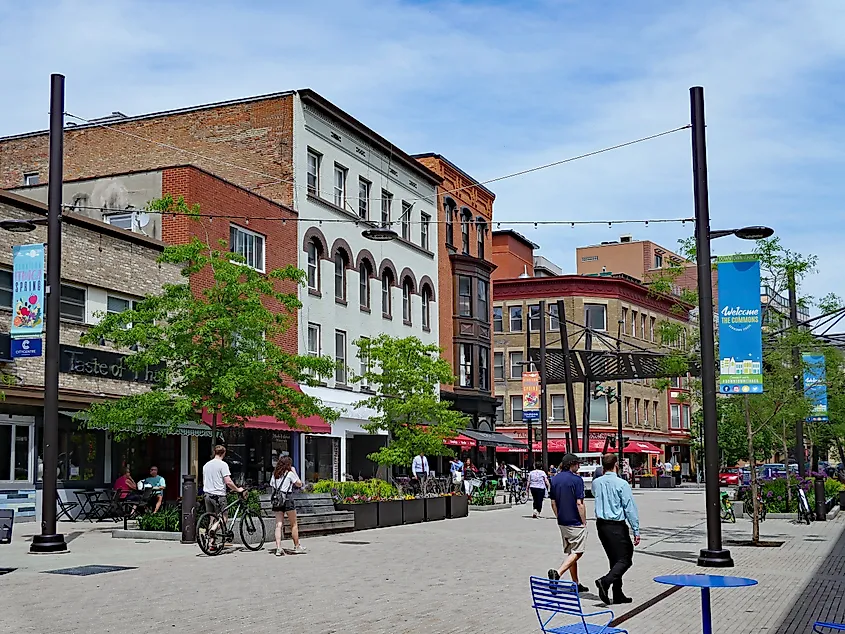
Ithaca’s town square is the Commons, a four-block pedestrian corridor on East State Street that replaced a vehicular street in 1974 and now operates as the city’s civic and commercial center. It’s one of the few 1970s pedestrian mall experiments in the U.S. that survived urban decline and came back stronger. The square is framed by early 20th-century commercial buildings, with a sunken plaza, steel sculptures, and embedded granite seating forming a linear public space. College students, protest organizers, and buskers cycle through in waves. The Sagan Planet Walk begins at the Commons, with to-scale planetary markers extending to the Science Center half a mile away.
Autumn Leaves Used Books overlooks the square and runs a full second floor of records and a rear deck with views over Cayuga Street. The State Theatre, built in 1928, stands just off the square and hosts touring musicians, film screenings, and speakers. On the Commons itself, Simeon’s on the Commons serves oysters, seafood towers, and bistro plates in a corner dining room facing E State Street, while Press Bay Alley, through an alley and across Green Street, holds a cluster of micro-retail stalls, including Boxy Bikes and Mama Said Hand Pies.
Skaneateles
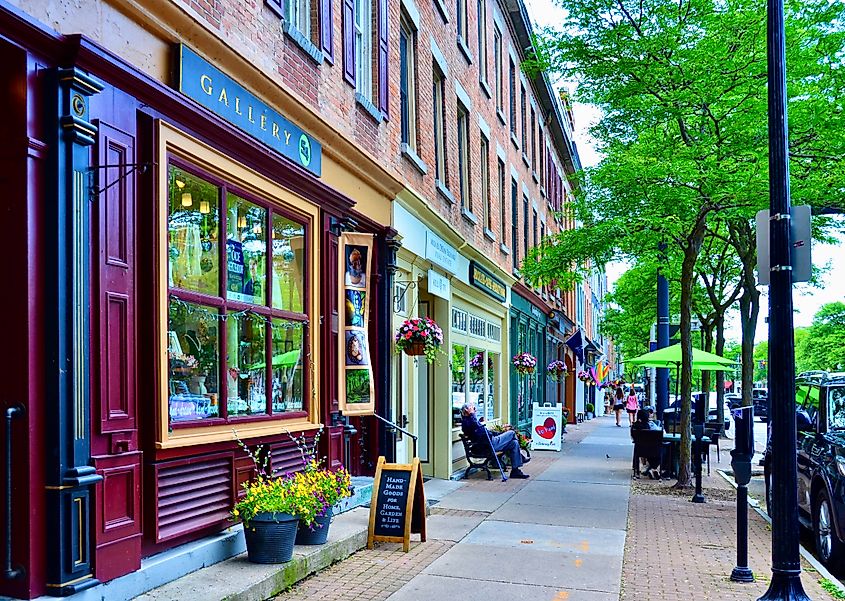
Skaneateles is one of the only towns in New York where the main square sits directly on a glacial lake with no industrial buffer. The square, centered on the intersection of Genesee and Jordan Streets, leans toward the water and opens into Clift Park, which includes the town pier, a boathouse, and a public bandstand. The lake is classified AA for drinking quality, and its clarity changes the scale of everything around it. Main Street buildings are low to the ground and mostly wood-sided, with porches, balconies, and long rooflines. No stoplight exists in the historic district.
The Sherwood Inn, opened in 1807, occupies the northeast corner of the square and serves as both a working hotel and restaurant, with lake-facing tables and a tavern bar lined with portraits of previous owners. Imagine, a half-block north, sells regional pottery, silver, and handbound journals. Doug’s Fish Fry, one block up Jordan, sells fried clams, coleslaw, and haddock sandwiches with orders called out over a loudspeaker. On summer weekends, Mid-Lakes Navigation docks the Judge Ben Wiles at the town pier for short cruises.
Cooperstown

Cooperstown’s town square runs east to west along Main Street but centers visually on Pioneer Park, a wedge of green where Pioneer and Main intersect under a Civil War monument. This is one of the only town squares in the state where crowds form around baseball hats instead of courthouse steps. The National Baseball Hall of Fame, opened in 1939, sits one block east and continues to pull players, collectors, and families year-round. The village was laid out by Judge Cooper, father of James Fenimore Cooper, and still follows a dense colonial grid between the lake and River Street.
Stagecoach Coffee occupies the corner opposite the park, with pressed sandwiches and iced espresso served out of an 1820s stone building. The Heroes of Baseball Wax Museum sits at 99 Main and includes a narrated diorama of Abbott and Costello’s “Who’s on First?” routine. Doubleday Field, a short walk west, is an active ballpark built in 1920 and still used for tournaments and exhibitions. Tin Bin Alley, two doors from the park, sells candy, maple products, and baseball souvenirs across two floors with open rafters and creeky staircases.
Lake Placid
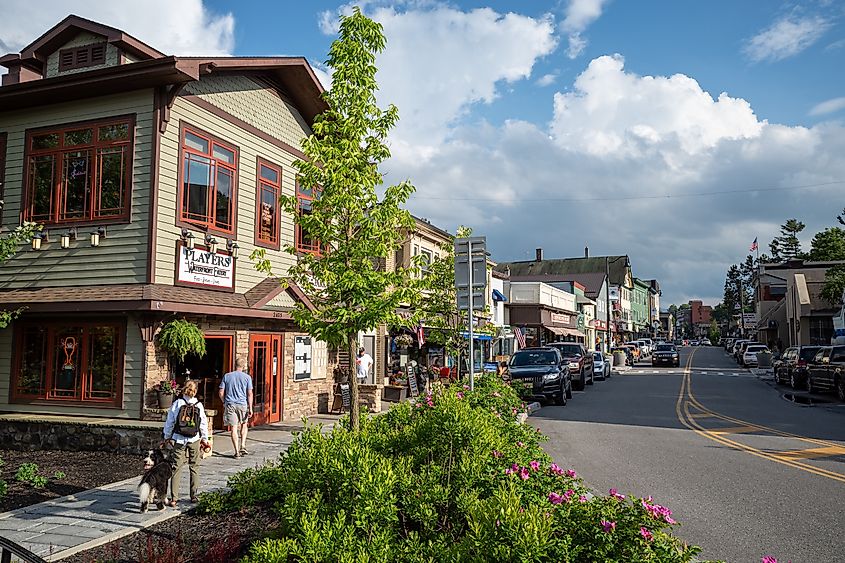
Lake Placid’s town square is the elevated strip of Main Street that curves along the south shore of Mirror Lake, anchored by Mid’s Park and the Olympic Center. The square blends public space with Olympic legacy, the 1932 and 1980 Winter Games left behind a speedskating oval, training facilities, and a still-operating arena. From the amphitheater steps in Mid’s Park, visitors look directly across the water to pine-covered ridgelines. Public skating, concerts, and torch-lighting ceremonies occur within a two-block radius. Storefronts along the square retain lodge-style facades, with deep awnings, stonework, and vertical wood siding.
Emma’s Lake Placid Creamery, across from the park, runs a walk-up window and sells maple soft-serve and candy by the quarter-pound. The Bookstore Plus, further down Main, carries Adirondack nonfiction, trail guides, and contemporary fiction, with author signings year-round. At 2733 Main, High Peaks Cyclery rents snowshoes, climbing gear, and paddleboards in all seasons. The Olympic Center’s museum reopened with new exhibits on Eric Heiden, the Miracle on Ice, and regional skiing history. Every shop, bench, and flagpole faces either the lake or the mountains, and the square maintains direct sightlines to both.
Saranac Lake
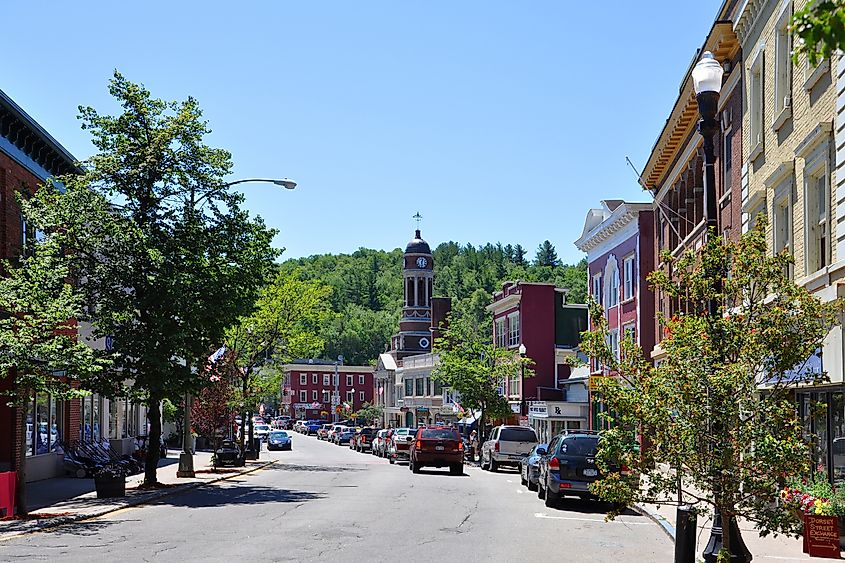
Saranac Lake’s town square forms at the junction of Main Street and Broadway, where the Saranac River narrows and bends under a concrete footbridge. The layout isn’t symmetrical, buildings follow the river’s curve, but Berkeley Green serves as the central public space, marked by an amphitheater, stonework, and a cast-metal sculpture of a jazz trio. The town was once a center for tuberculosis treatment, with hundreds of cure cottages surrounding downtown. The air and elevation drew artists and doctors, and that mix still defines the square’s atmosphere, practical, independent, and art-focused.
Hotel Saranac, at 100 Main, operates out of a 1927 brick building and includes Ampersand Salon and a lobby cocktail bar with a fireplace and Adirondack portraits. Origin Coffee, on the corner across from the riverwalk entrance, serves pour-overs and seeded pastries in a long, narrow space with floor-to-ceiling windows. The Adirondack Center for Loon Conservation, one block off the square, runs science exhibits and field programs out of a storefront with glass taxidermy and call stations. Twin Crystal Rock Shop, across Broadway, sells geodes, trilobites, and fossils arranged in wood cases. The square stays active year-round, with Winter Carnival parades, art walks, and back-to-school band concerts spilling into the street.
From canal towns to mountain villages, these main streets hold the region’s memory in daily use: coffee at daybreak, deliveries at noon, lit marquee after dark. They aren’t relics; they earn their keep block by block. If the filter is fidelity, intact fabric, a civic room, and independent doors that open early and close late, each place clears it. Ten addresses, one idea: a strong spine makes a small place feel complete.


